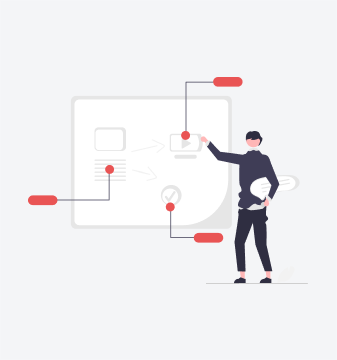Picture this: You’re embarking on a journey to develop a new product and are at the crossroads of choosing the right methodology to guide your team. Do you use the sleek, modern Agile approach or opt for the tried-and-true Waterfall methodology? It’s a decision between agile vs. waterfall that can make or break your project’s success.
In this article, we’ll take you on a thrilling tour of the Agile and Waterfall methodologies, comparing their strengths and weaknesses and helping you make an informed choice that will elevate your product management game.
The Agile Advantage: Speed, Flexibility, and Collaboration
Agile, the dynamic methodology that has taken the software development world by storm, is all about adaptability, continuous improvement, and close collaboration. Here’s what makes it exciting:
- Iterative Development: Agile divides the project into small, manageable iterations. Each iteration results in a potentially shippable product increment, allowing for rapid feedback and adjustments.
- Flexibility: Agile embraces change. Agile teams can pivot without derailing the entire project as market demands evolve or insights arise. This adaptability is a game-changer in fast-paced industries.
- Collaboration: Agile thrives on cross-functional collaboration. Developers, designers, marketers, and stakeholders work hand-in-hand throughout the project, fostering a shared understanding of goals and challenges.
- Customer-Centricity: With its iterative approach and frequent feedback loops, Agile ensures that the final product aligns closely with customer needs and expectations.
The Waterfall Wisdom: Structure, Predictability, and Documentation
Waterfall, the traditional heavyweight, provides a structured framework with a strong focus on planning and documentation. Here’s what makes it a dependable choice:
- Clear Phases: Waterfall divides the project into distinct phases, such as requirements gathering, design, development, testing, and deployment. Each phase is completed before moving to the next, ensuring a systematic approach.
- Predictability: With a detailed upfront plan, Waterfall projects tend to be more predictable regarding timelines, scope, and budget. This can be advantageous for industries with strict regulations or fixed deadlines.
- Documentation: Waterfall demands comprehensive documentation at every stage, which can serve as a valuable resource for future reference, maintenance, and audits.
- Well-Suited for Stable Requirements: Waterfall can be an efficient and effective choice when project requirements are well-defined and unlikely to change significantly.
Agile vs. Waterfall Comparison Table
Let’s dive into the details with a side-by-side comparison of these methodologies:
| Aspect | Agile | Waterfall |
| Approach | Iterative | Sequential |
| Flexibility | Embraces change and uncertainty | Limited flexibility |
| Project Phases | Overlapping phases | Distinct phases |
| Feedback | Frequent, continuous | Limited until later stages |
| Documentation | Less emphasis on extensive documentation | Extensive documentation at each phase |
| Predictability | Less predictable due to evolving requirements | More predictable due to upfront planning |
| Customer Involvement | High involvement, frequent collaboration | Limited involvement until later stages |
| Risk Management | Risks addressed iteratively | Risks addressed at the beginning |
| Time Management | Flexible timelines and adjustments based on feedback | Fixed timelines and potential delays if phases overrun |
| Scope Changes | Embraces scope changes as part of the process | Scope changes discouraged after initial planning |
Making the Right Choice for Your Project

Source: Pexels
Now that we’ve dissected both methodologies, the big question is: which one should you choose? Well, the answer depends on the unique characteristics of your project.
- Choose Agile if you’re in a fast-paced, innovation-driven environment where evolving requirements and quick market feedback are crucial.
- Choose Waterfall if your project has well-defined, stable requirements and you operate in an industry with strict regulations or tight control over timelines.
Hybrid Approaches and Evolving Trends
The Agile vs. Waterfall debate isn’t always black and white. Many teams opt for hybrid approaches, blending elements of both methodologies to suit their specific needs. This allows for customization while retaining the benefits of structure and flexibility.
Conclusion
Regarding product management, choosing between Agile and Waterfall methodologies is akin to picking the right tool for the job. Each methodology has its strengths, and your choice should reflect the nature of your project, industry, and team dynamics.
Whether you’re sprinting with Agile or cascading with Waterfall, remember that success ultimately lies in adapting and tailoring these methodologies to your specific circumstances.




